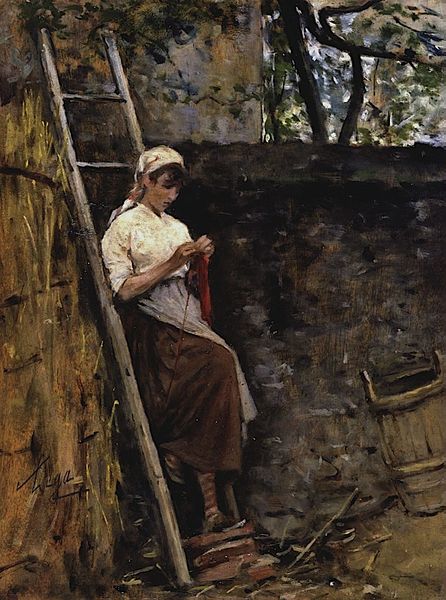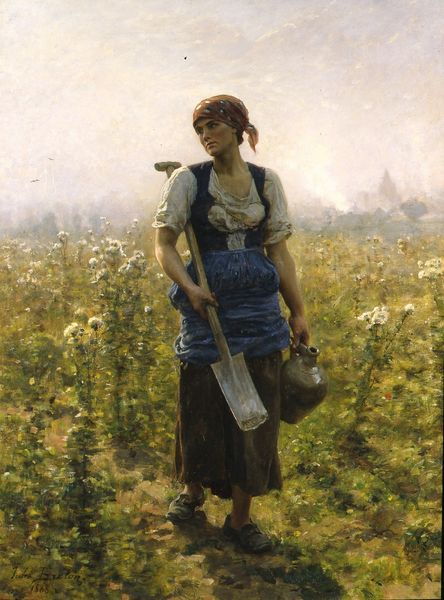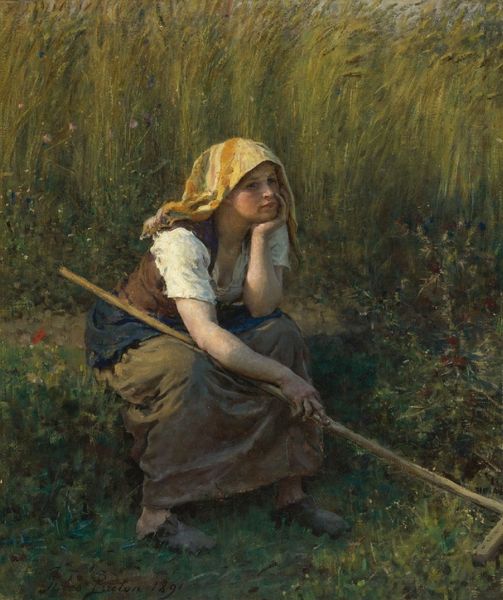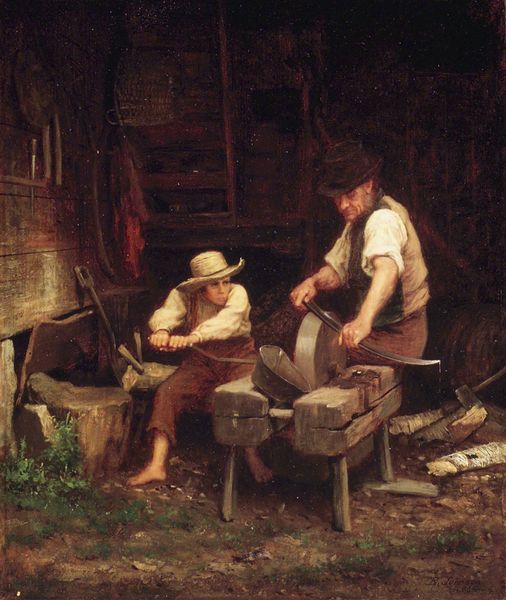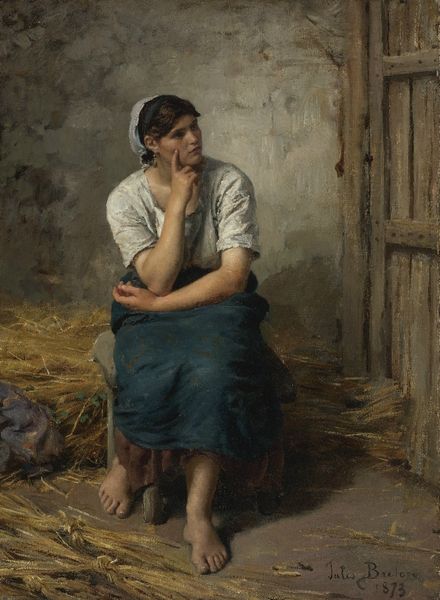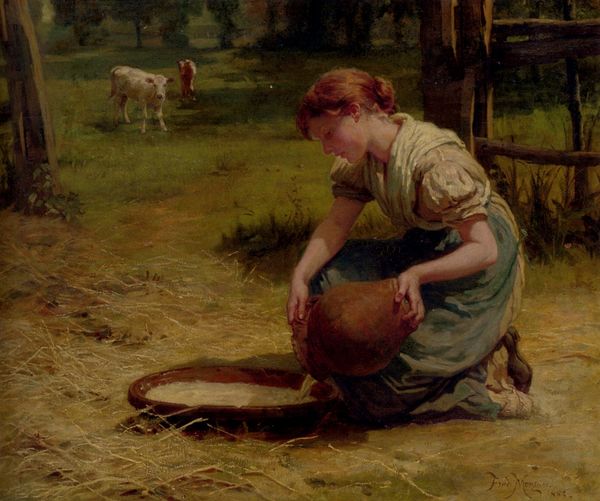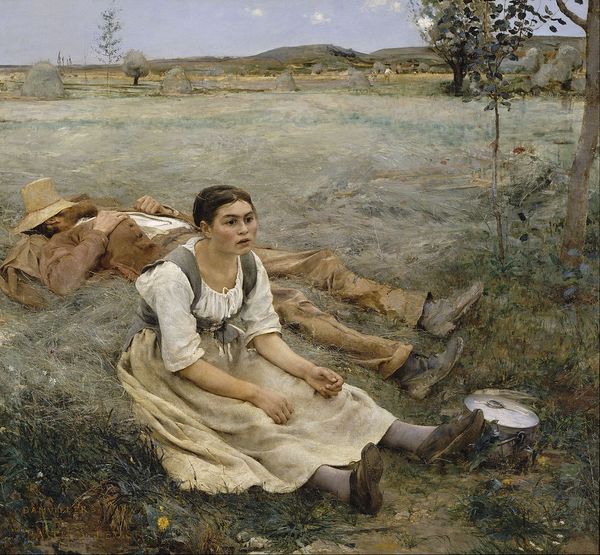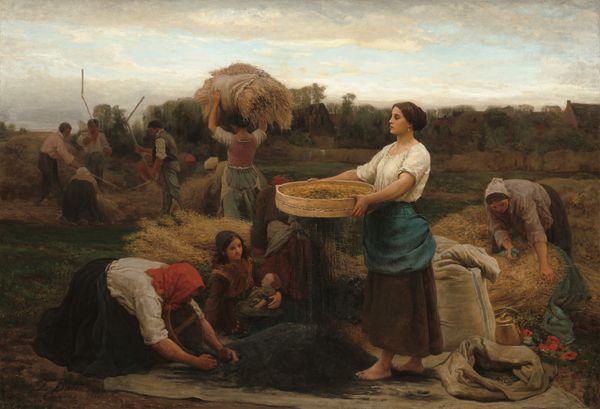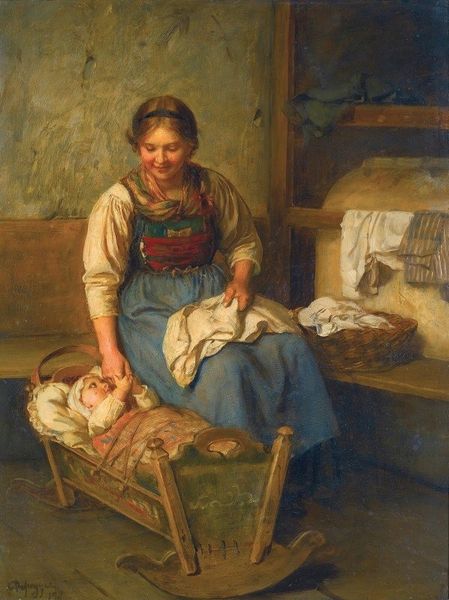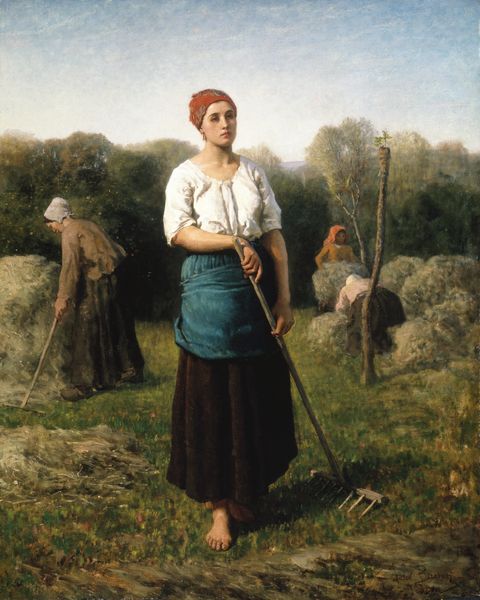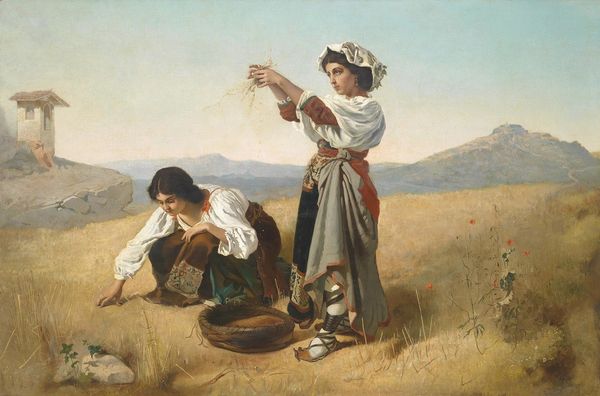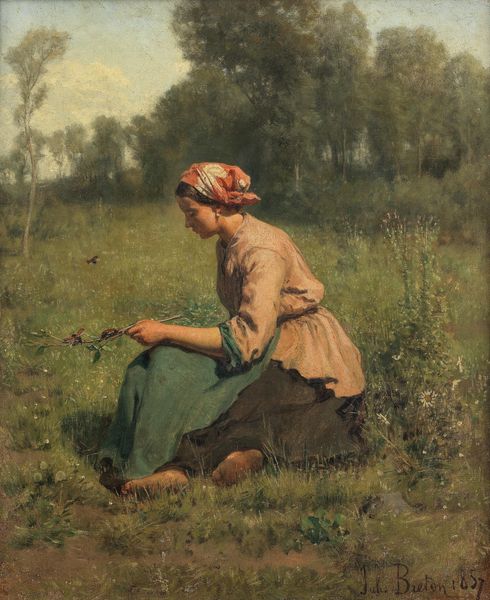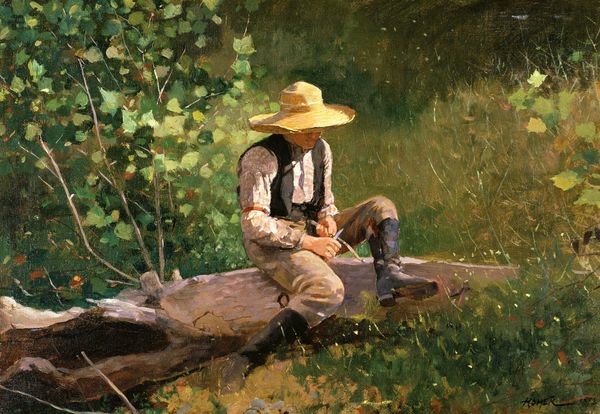
Dimensions: 70 x 90 cm
Copyright: Public domain
Editor: This is Noè Bordignon's "Washerwoman," painted in 1881. It's an oil painting, and I’m struck by how intimate and un-idealized the scene feels. What's your perspective on it? Curator: It's a fascinating example of genre painting embedded within the Realist movement. The artwork exemplifies a tension present in 19th-century art. Bordignon depicts labor, but there's a layer of romanticism that might sanitize the harsh realities faced by working-class women at the time. What is the role of art in representing labor? Is it to expose or to aestheticize? Editor: So, you're suggesting that the painting, while showing a common scene, might not fully represent the woman's struggle? Curator: Precisely. Consider the intended audience – likely wealthy patrons. How does showing this "simple" life potentially reinforce existing class structures and romantic ideals of rural life, all while obscuring socioeconomic realities? Editor: That’s a good point. It makes me consider how art is used to communicate, maybe even miscommunicate, the lives of people outside of the art world. Did that influence the way museums curated paintings of the working class? Curator: Absolutely! Museums became crucial in shaping how the public perceived such representations, legitimizing certain narratives and, at times, perpetuating stereotypes. The display and interpretation of works like “Washerwoman” depend entirely on these ever shifting socio-political interpretations of art and history. Editor: This has really changed my view. I will be approaching Realism with more complex questions from now on. Thanks! Curator: Indeed! Reflecting on those critical angles can provide new meaning. I feel I now have to wonder whether or not genre paintings gave a voice to the common population or robbed them of their own voices in order to represent a sanitized image for the ruling class.
Comments
No comments
Be the first to comment and join the conversation on the ultimate creative platform.

